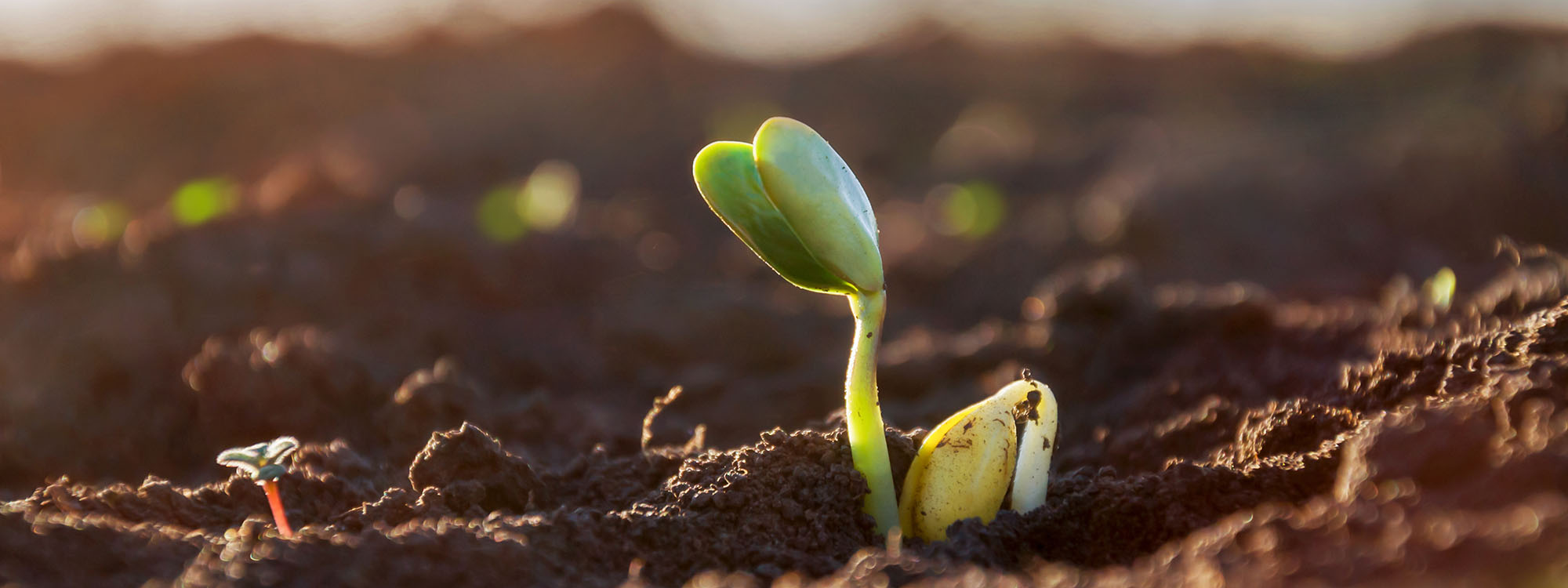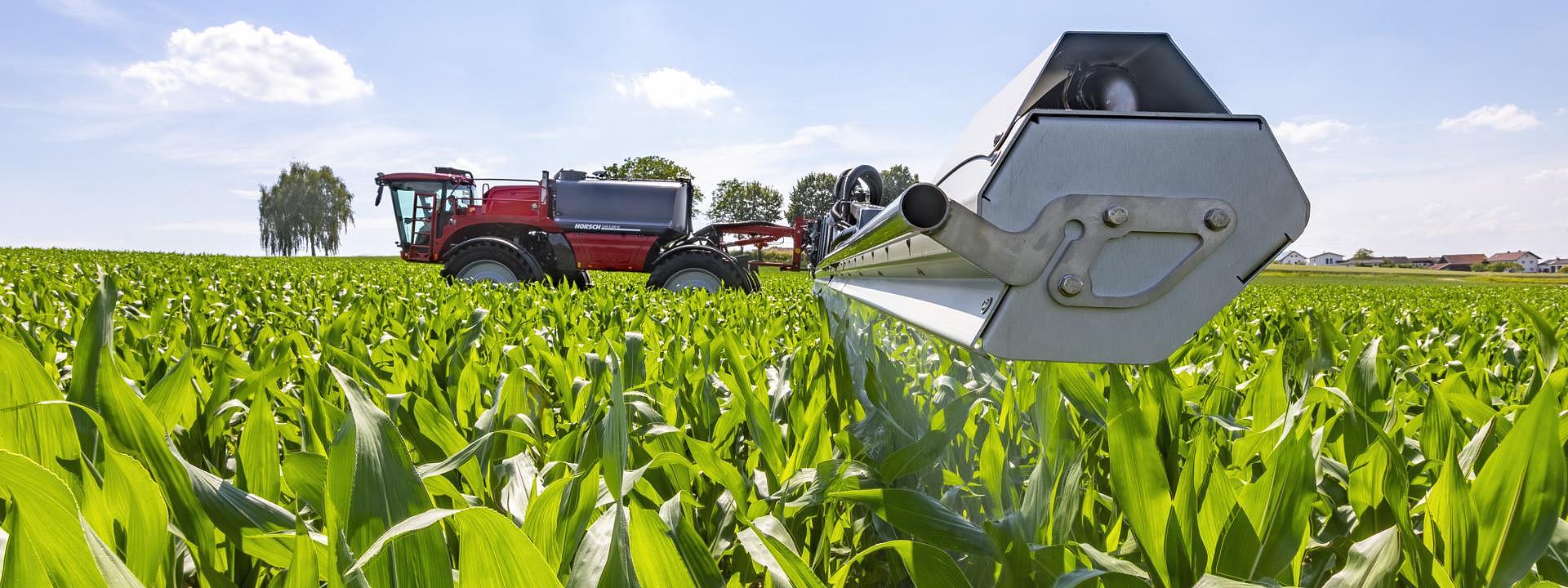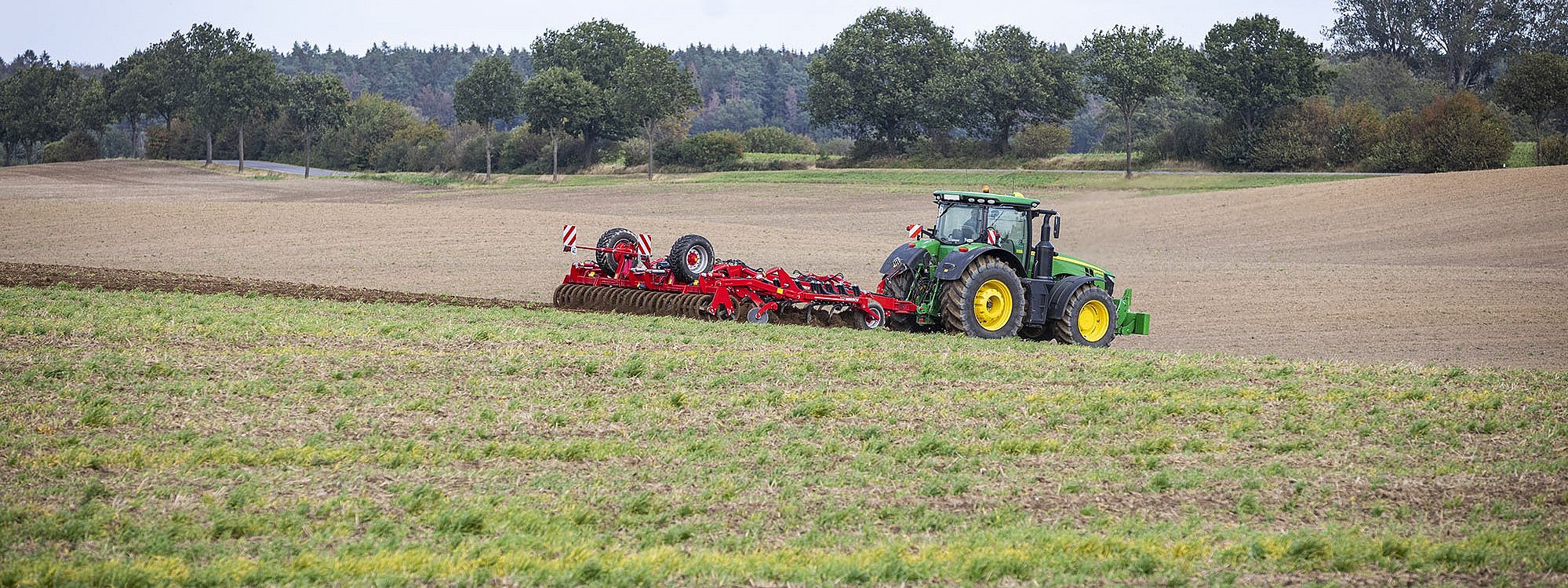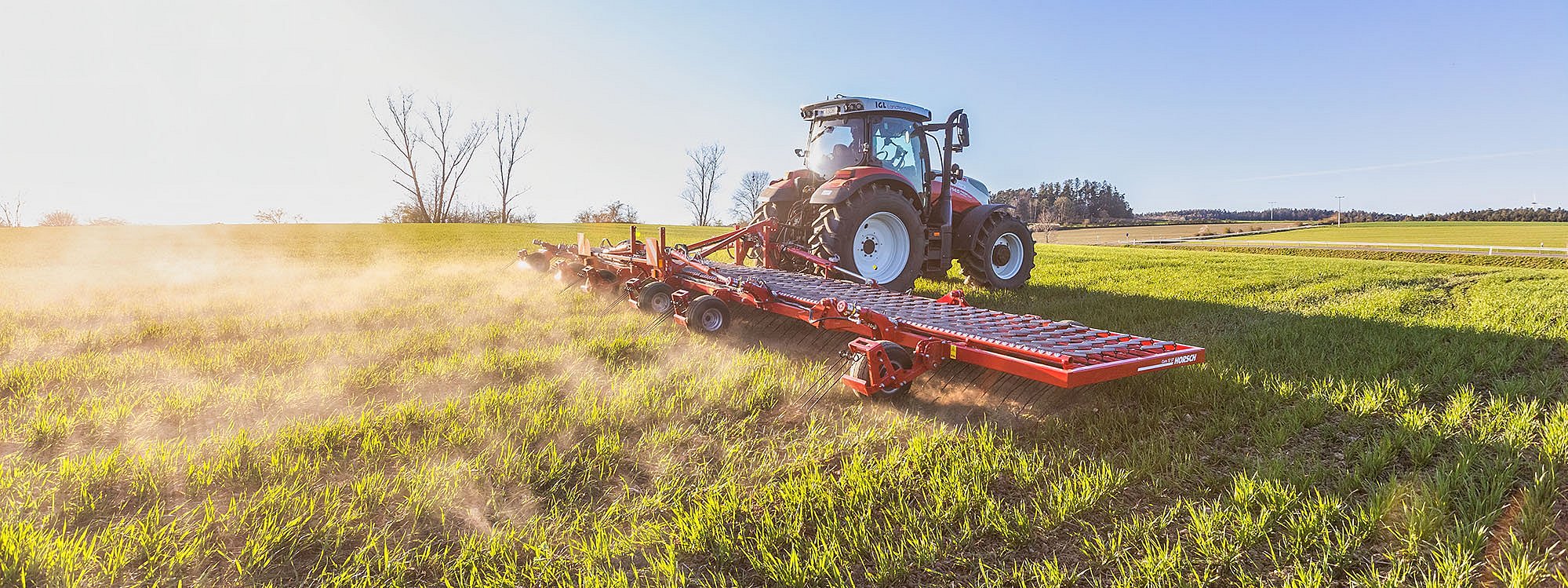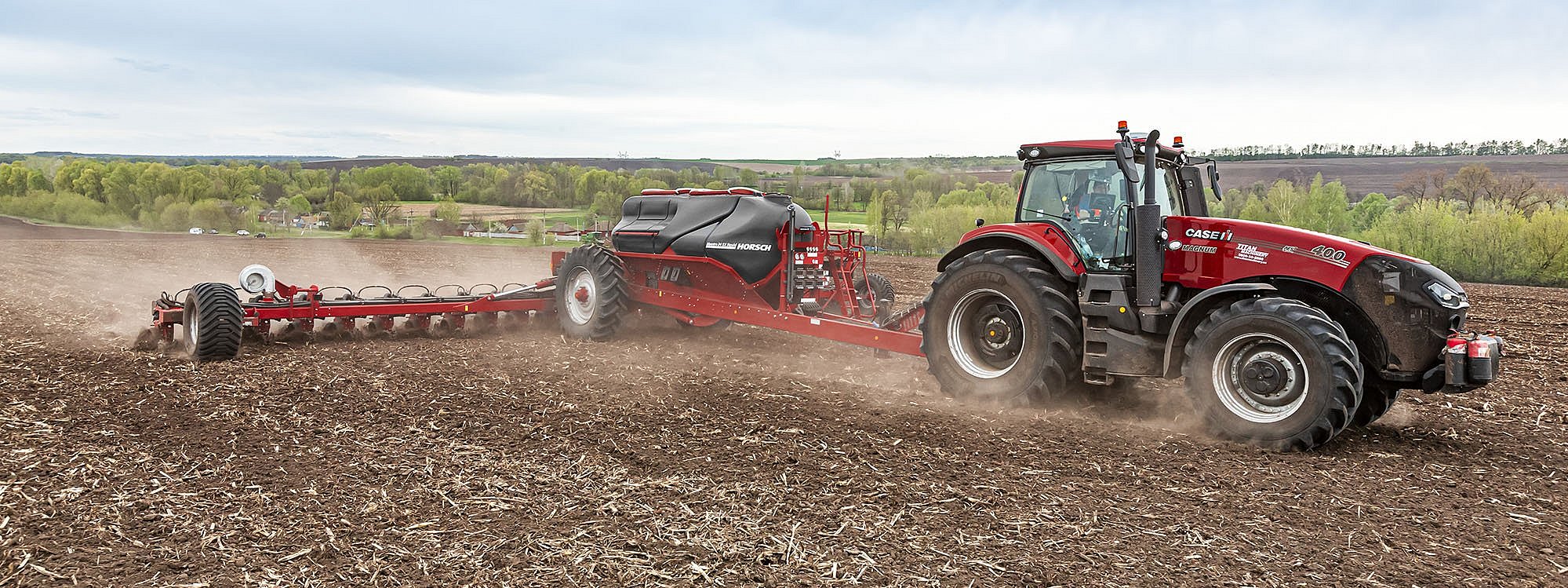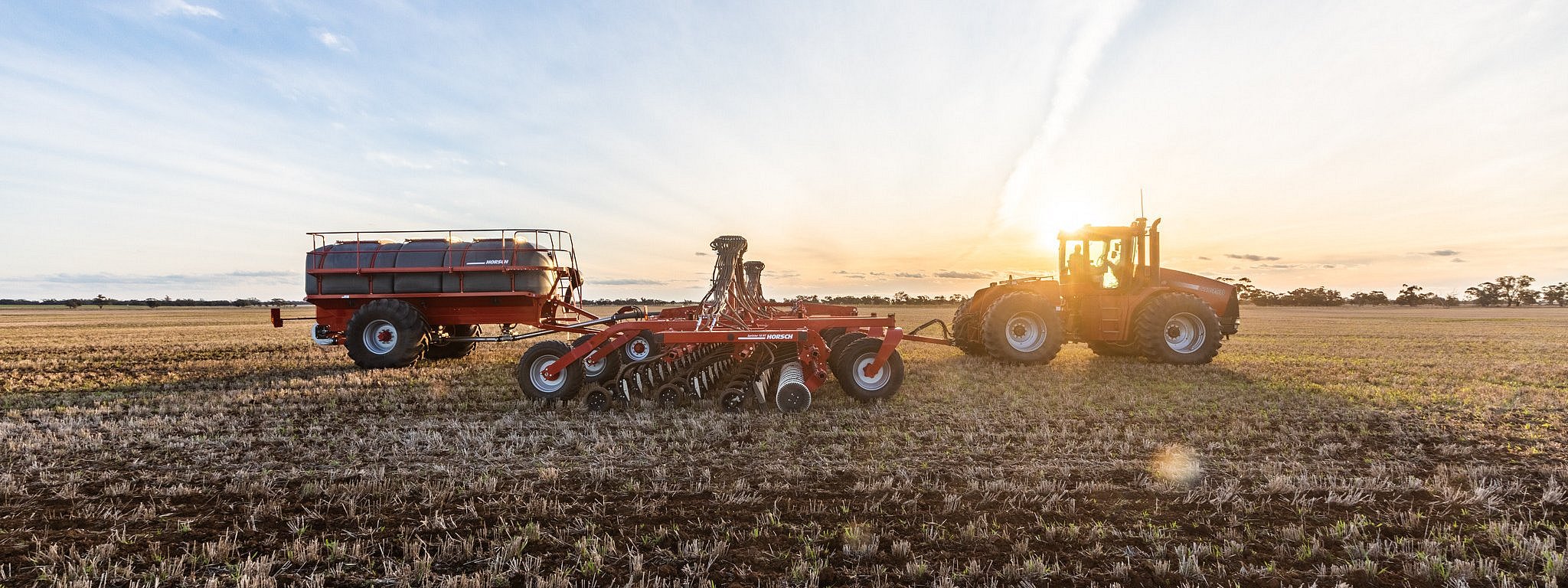Water capacity of different soils
Water capacity of different soils
Water in abundance vs. water shortage – which role does the soil play in this respect?
The contrast between the heavily saturated soils in spring and the dry soils in summer seems to increase more and more. After the snowmelt or after high rainfall, the soils are filled with sufficient water in spring while they seem to dry out during the summer months. The extent of these effects depends on the factors in the soil, especially on their water capacity.
What hides behind the term “water capacity”?
Water capacity describes the total amount of water a soil can store and bind. It is the sum of gravitation water (run-off water) and field capacity.
Capillarity, water capacity, field capacity & co
The process of binding water in the soil takes place according to the principles of capillarity and adsorption: tighter capillaries or pores lead to a higher increase in water and to higher capillary and adsorption forces what keep the water in the soil. If the plant wants to absorb water, it has to exert higher tension forces than the capillary and adsorption forces that hold the water in the soil.
The tension that holds the water in the soil against gravity is measured by the pF value. The higher the pF value, the drier the soil.
As a simple measure for the water capacity, you can determine the field capacity (FC) or the maximum water capacity. It corresponds to the amount of water a soil can maximally hold against gravity.
The water quantity that is available to the plants is called usable field capacity (uFC) and is limited by the permanent wilting point (PWP). The PWP usually is pF 4.2. The water that is held in the finest pores with a tension of more than pF 4.2 is not available to the plants and is called dead water (DW). The uFC, thus, results from the FC minus the DW and ranges from pF 1.8 to 4.2.

How much water a soil can store depends on different factors.
Soil pores
The pores of the soil supposedly have the strongest influence on the water capacity. An average arable soil consists of approx. 50% of solid mineral components, approx. 7% of humus and approx.. 43% of void volumes. These void volumes are filled either with air or water depending on their diameter and the water supply of the site. They are classified into wide macropores (> 50 µm), narrow macropores (10- 50 µm), medium pores (10-0,2 µm) as well as fine pores (< 0,2 µm).
The wide macropores are filled with air. In periods of rain, they fill with water and discharge this water into the subsoil. After one to two days, they are empty again as they cannot hold the water against gravity and then serve to aerate the soil. They are the habitat for microorganisms and the plant roots.
In the narrow macropores the water can only seep away slowly and during the vegetation period is still used by the plants. As soon as the water has seeped away or has been absorbed by the plants, these pores, too, are filled with air.
In the medium pores the water is held against gravity. Together with the water supply in the narrow macropores, the water counts among the usable field capacity. In the long term, the water in the medium pores is most important for the plants. They store the plant-available water and can supply plants with water from deeper layers by means of the capillary rise. The roots with their fine lateral roots and the root hairs of the plant advance into the medium pores.
In the fine pores the soil water is so strongly bound by adhesive forces that the plant can no longer extract it. This is referred to as dead water. This means that the tension of the roots is no longer enough to extract water from the soil. If the soil dries out to such an extent that only the fine pores bear water (pF 4.2), many plants have reached the PWP. In the pathways, the water supply from the roots is cut off and plants wilt.
Soil type
The soil type also has a major influence on the water capacity. The different soil types differ with regard to granulation, soil fabric, organic matter content and pore size distribution. Normally, the following applies with regard to the water capacity: sand < loam < silt < clay < peat.
Due to their large particles and their high share of macropores, light soils, sand and slightly loamy sand, have a low water capacity. Water quickly penetrates the soil and is not available to the plant for a very long time. These soils have little water storage potential.
If the structure is good, medium soils, heavily loamy sand to silty loam, have a medium water capacity, are sufficiently ventilated and can be cultivated easily. With their fine texture, these soils can store more water than sandy soils as the small particles and the higher share of medium and fine pores can hold the water better.
Heavy soils, clayey loam to clay, have a very high water capacity. In these soils, especially the fine pore share and thus the dead water share are very high. Moreover, swelling processes of clay colloids and humus particles hold the water in the soil so that the remaining water forms thin water films around the soil particles.
For practical use, this means that in wetter conditions, sandy soils provide considerably more plant available water whereas loamy soils or clayey soils have a higher water-holding capacity in dry periods.
The course of the water capacity of a soil is shown as a water tension curve depending on the relative water share of the soil. This curve correlates with the above mentioned factors.
Water tension curve
If you take a look at the water tension curve of the different soils, you will see that with a decreasing volumetric water share of the soil the tension of the soil against gravity increases. If you take the water tension curve of the pure sand as an example, you can see that it stops at a tension of 105 or at a pF value of 5. This implies that a pure sandy soil has hardly any fine pores and that, thus, tension does not rise to the same extent. In contrast to this, it becomes clear that pure clayey soils have less wide macropores.
Humus content
In addition to the soil pores and the soil type, the humus content, too, plays a major role with regard to the water capacity of the soil. As humus influences the soil physical properties, it also affects the water capacity. Humus binds the mineral soil particles to form a soil structure with a lot of void volumes and it stabilises the soil fabric and improves soil structure. Moreover, it increases the pore volume and, thus, provides optimum requirements for the air and water supply. As mainly the share of the medium pores in soils increases, the water capacity resp. the uFC increases, too.
How much water can a soil store?
As described above, the total quantity of water that can be stored in the soil depends on numerous factors.
In principle, you can say that…
… sandy soils can store approx. 6 - 10% of their weight in water.
… loamy soils hold approx. 20 - 30% of their weight in water.
… clayey soils store approx. up to 40% or more of their weight in water.
The humus content, too, determines the amount of water that is stored in the soil. The values how high the water storage by the building up of humus really is vary. In general, the following applies: humus can store three to five times its own weight in water. In an article, the Federal Ministry of Food and Agriculture indicates values of an increase of 2 – 4% for the water capacity and 13 – 28% for the usable field capacity due to a building up of 500 humus equivalents/ha (one humus equivalent corresponds to 1 kg humus carbon). Building up humus, thus, is one of the most efficient ways to increase water storage capacity.
The importance of water capacity in practice
In view of the climate change and the extreme weather events involved, the focus more and more is on the water and air supply of our soils. In wet periods, the soil is to drain the excess water as quickly as possible to the subsoil and the ground water. For dry periods, the soil is to store as much plant available water as possible and, thus, achieve the highest possible uFC.
Approx. 40 – 85 mm/m² of rainfall is required to produce one ton of wheat. With a yield of 10 t/ha, this corresponds to a water requirement of 400 - 850 mm/m2 during the vegetation period. In comparison, the average annual rainfall in Germany amounts to 830 mm/year. Thus, the water consumption seems to be considerable, especially if you consider that, moreover, this amount of rain has to fall at the optimum time. It quickly becomes clear that water often is the limiting factor.
The loss of water on arable land is mainly due to transpiration (transpiration via the leaves of the plant), evaporation (soil evaporation), surface run-off and seepage.
Plant transpiration is a natural process and required for the growth of the plant and thus the yield. Because of this inevitable water requirement, it is essential to minimise at least the other losses on arable land. This objective is closely connected with the cultivation method and particularly the tillage of the arable land.
With regard to tillage, how do I make the most of my soil and its water capacity?
The objective of tillage is to improve the growth conditions for the crop without destroying soil structure, soil fertility and soil organisms but at best even improving them.
Today, various tillage and cultivation systems are used in arable farming that, thus, influence water and air supply in different ways.
Tillage with a plough
Ploughing is a reliable and proven method. The soil is not only loosened deeply but also inverted and harvested residues as well as weeds are incorporated. What does this mean for the water supply of the soil?
The deep loosening and mixing of the soil disturb soil structure and pore continuity, restricting a fast draining of the water to deeper layers. Moreover, every cultivation measure disturbs the earthworm population. The result are less water bearing channels and pores. This also interferes with the capillary rise and thus the water supply of the plants from deeper soil layers. In addition, several layers can be formed, among them compacted subsoil, smear layer on the bottom of the furrow and straw mat layer. Other possible layers are the cultivation layer of the pto-shaft driven harrows that are used or silting at the soil surface. This, too, affects pore continuity and the water supply of the soil. These anthropogenic layers also interfere with the formation and the downward growth of the roots. All this results in low infiltration outputs and, as a result, in an increased surface run-off. More loss of water is caused by the striking increase of the soil surface because of ploughing. The soil water in the topsoil volatilises easier to the atmosphere because of evaporation. Moreover, the bare, dark soil without a surface layer of organic matter absorbs the sunrays and encourages evaporation and the heating of the soil.
It quickly becomes clear that tillage with a plough is inadequate with regard to water efficiency. Cultivation with a plough on dry sites or during severe dry periods is problematic as a subsequent supply of water from deeper layers cannot be ensured because of the destroyed capillary rise. With this method, the water supply from „above“ should be ensured by regular precipitations.
Direct seeding
Direct seeding is a seeding method without any previous tillage. Special direct seed drills are required that open the seed slots where the seed is placed. It then is covered with soil. Soil structure and soils organisms are encouraged. But what does this so-called No-Till system mean for the water supply of the soil?
Soils that are cultivated with the No-Till method have a high water infiltration capacity and a high capillary rise of the water. One reason is the distinct pore continuity that favours the vertical water transport. The natural layers of the soil are maintained with this agronomic method. This ensures that the continuously existing capillaries contribute to the continuous rise of water from deeper soil layers. Moreover, run-off rainwater can better infiltrate the soil and be kept there.
In addition, a cultivation method without tillage encourages soil organisms and mainly large earthworm populations which improve soil structure and soil fertility. Capillarity and the infiltration output of the soil, too, are encouraged.
Due to the plant residues lying on the soil surface and the increased percolation stability of the topsoil aggregates, soils that are cultivated with the No-Till system are protected from silting.
The mulch layer does not only prevent silting and erosion but also has an interception effect. Keyword albedo effect: it describes the albedo of a surface. If you compare a No-Till field with a field that was cultivated with a plough, the reflection of the No-Till field is significantly higher. The reflected radiation cannot heat up the soil resp. only heats it up less which results in a lower evaporation. The humidity which is transported upwards from the deeper soil layers, thus remains in the soil and the upper soil layers are less prone to drying out. The result is a higher water content in the deeper soil layers and in dry periods the plants suffer less from water stress. In addition to the mulch layer, the unloosened soil prevents an increased evaporation.
In general, direct seeding has proven to be an extremely water-saving seeding method and plays a major role particularly in North and South America. In view of the extreme climate conditions and the increasing dry periods, direct seeding also becomes more and more important in our parts.
Mulch seeding
Mulch seeding is the most commonly used method. It means seeding a main crop into the harvest residues of the previous crop or a catch crop. Before seeding, the soil is loosened deeply or shallowly but not inverted. In general, cultivators are used, but also disc harrows or pto-shaft driven tillage tools. Before or at the same time of seeding, a seedbed preparation can be carried out in the form of shallow tillage.
Depending on the kind and the depth of loosening in mulch seeding, it differently influences the water and air supply.
Deep loosening and mixing of the soil influence the water supply in a similar way to ploughing: soil structure, pore continuity, earthworm channels and capillarity are disturbed. The consequences include an obstruction of the water supply of the plants from deeper layers, reduced infiltration output and increased surface run-off.
Shallow loosening, however, can roughly be compared with the direct seeding method. Only a shallow cultivation is carried out, thus the soil structure with all its natural layers, pore continuity, earthworm channels and the capillary rise is maintained to the greatest possible extent. The water supply of the plants from deeper layers and the infiltration output, thus, are better than with a deep loosening.
Basically, mulch seeding can reduce the heating of the soil as well as evaporation by means of the mulch layer of the plant residues and water loss, thus, is reduced.
Which other measures can improve the water supply of the soil?
Of course, tillage is an important factor that influences the water supply of the soil and ideally even improves it. However, other essential factors have to be taken into account that influence the water supply of the soil. Other relevant influencing factors are:
Consolidation
Consolidation after tillage is essential to restore the seed-soil contact and the capillary rise. Moreover, it improves the distribution of macropores, medium and fine pores and thus the air and water supply. To optimise the conditions for the seed after seeding and especially to facilitate its access to water, the seed should be placed on the water bearing layer and consolidated for a better capillarity.
Catch crops
Catch crops have a multitude of positive effects on the soil and thus also influence the water supply. They contribute to the encouragement of the soil structure and the building up of humus, e.g. by a year-round rooting and its organic matter. This leads to an increased water capacity and an improved infiltration output of the soils which in turn prevents surface run-off. Moreover, catch crops contribute to the storage of winter humidity. The constant soil cover also provides protection against overheating and reduces evaporation.
Elimination of harmful effects
In all cultivation systems, the cultivation passes have to be adapted to the weather and the humidity of the soil. It is essential that the soil is dry for cultivation. Cultivation in wet conditions entails a lot of problems. Soil compaction caused by heavy machines as well as compaction and smear layers in the cultivation horizon of the tines and points are two of them.
Compaction leads to bad water absorption and storage. In a compacted soil, the macropores and the pore continuity are destroyed. The result is that pores with a pressed pore volume that were originally filled with air are now filled with water, as a result the soil water runs off superficially and does not seep away. Moreover, root growth and development are restricted which means a lack of water supply for the plant.
The seepage characteristics of compacted soils with low infiltration output can be improved with a targeted loosening of the subsoil and with tillage. This, however, requires an absolutely dry soil! But basically, a tillage of the soil structure cannot restore the soil structure.
Summary
The motto is: the less the soil is cultivated, the less water is lost. If there a cultivation is carried out, the following applies: the shallower the cultivation and the less mixing, the more water is saved. Tillage leads to a drying out of the topsoil layer and an interruption of the capillarity. If you depend on a capillary rise/subsequent supply of water from below, you should do without (deep) tillage.
Another measure to prevent the loss of water is the covering of the soil with plant residues. Mulch has an insulating effect and provides a protection against erosion and surface run-off.
Sources:
GEFA FABRITZ: https://www.gefafabritz.de/amfile/file/download/file/427/
Wikipedia: de.wikipedia.org/wiki/Wasserkapazit%C3%A4t
Ahabc.de: www.ahabc.de/bodeneigenschaften/wasserspeichervermoegen/
Hyper SoiL: hypersoil.uni-muenster.de/1/01/02.htm
Bodenwelten: www.bodenwelten.de/content/boden-wird-versiegelt
Topagrar: www.topagrar.com/dl/3/8/1/8/3/1/5/T_092_097_03_21.pdf
